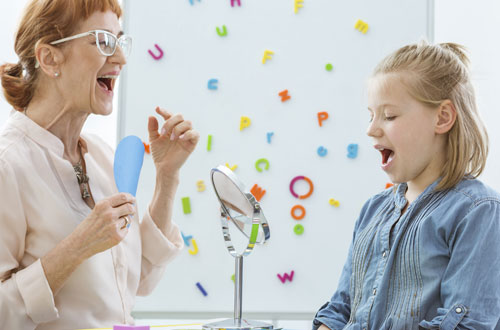Speech Sound Disorders
Speech is the ability to use your lips, tongue, and other parts of your mouth to produce sounds. To produce clear speech, children need to be able to produce the different sounds of speech, as well as understand the rules for putting those sounds together in their language.
Most children have mastered the following sounds by the following ages:
- around 2-3 years: b, p, m, n, h, d, t, k, g, ng (as in sing), w, f, y
- around 4-5 years: l, j, ch, s, v, sh, z
- around 5 years: r, zh (as in “measure”), th (voiced as in “this”)
- around 6 years: th (voiceless – as in “thumb”)

Most children make mistakes in their speech during the first few years of speech development. But by about three years, their main caregivers can understand most children. Some phonological processes persist until children are older, but most are resolved by 3-6 years of age. Your speech and language therapist will be able to advise you in more detail about these.
If you are worried that your child might have a speech sound disorder, think about how often people who don’t know your child have trouble understanding your child.
- Around 2 years about 50% of your child’s speech should be understood by a stranger.
- Around 3 years about 75% of your child’s speech should be understood by a stranger.
- Around 4 years about 100% of your child’s speech should be understood by a stranger.
It is best to consider seeking help if your child:
- Is six months or more behind the approximate age ranges for using speech sounds.
- Uses speech patterns that are delayed for his/her age, or speech sounds that are immature compared with peers.
- Gets frustrated about speaking – for example, your child gets upset when he or she is not understood and has to repeat himself/ herself frequently.
- Has atypical speech errors – such as a lateral lisp (sounds are “slushy” in quality), omits sounds in the start or middle of words, or has atypical speech sound substitutions.
- Has inconsistent production of speech sounds (including vowels) and words and difficulty producing them.
If you are concerned about your child’s speech, please contact our team to schedule in an assessment. A speech assessment can identify your child’s strengths and areas to develop so that therapy can be planned and implemented to help their speech.
References
McLeod, S and Crowe, K (2018) Children’s consonant acquisition in 27 languages: A cross-linguistic review. American Journal of Speech-Language Pathology